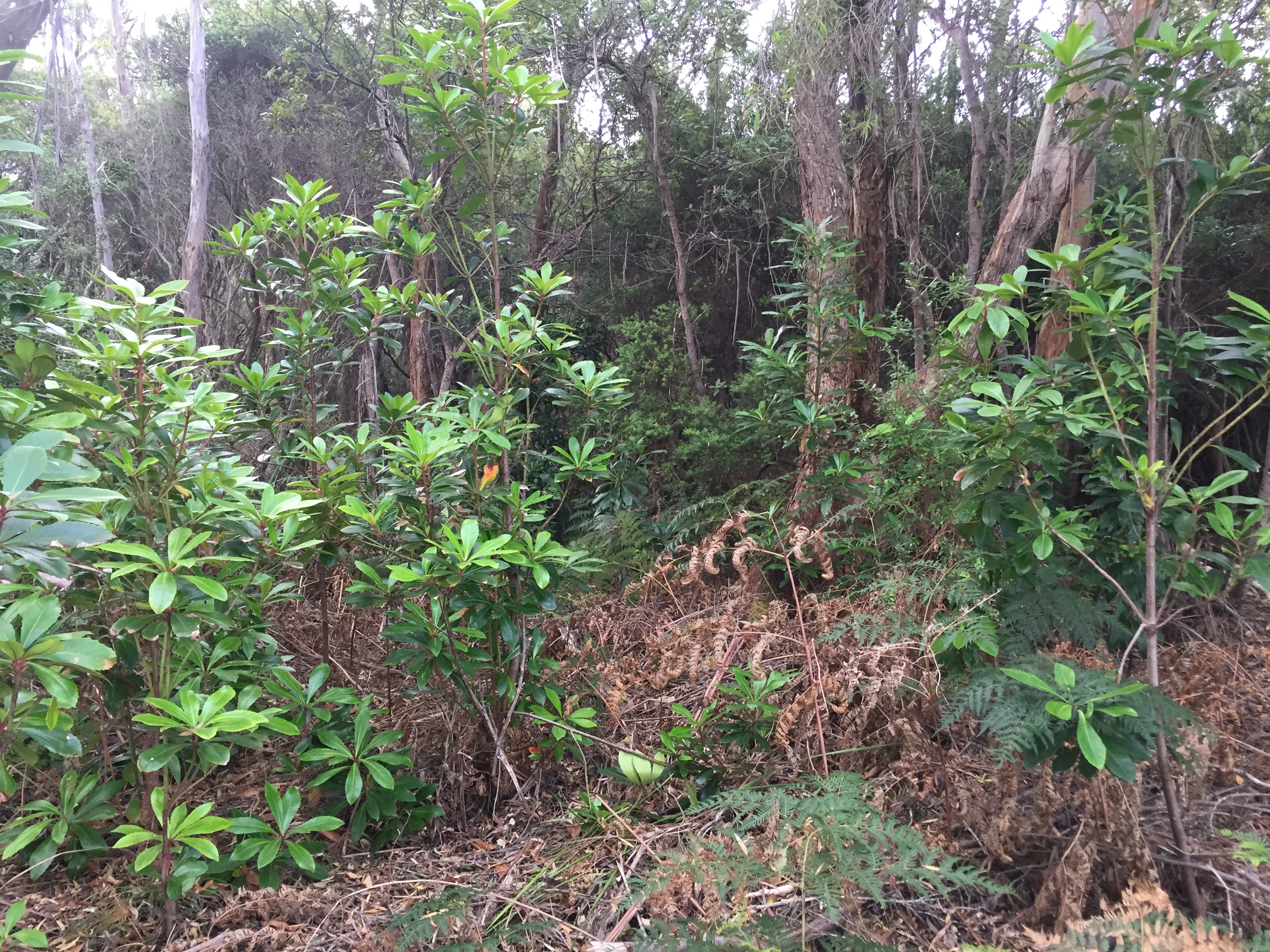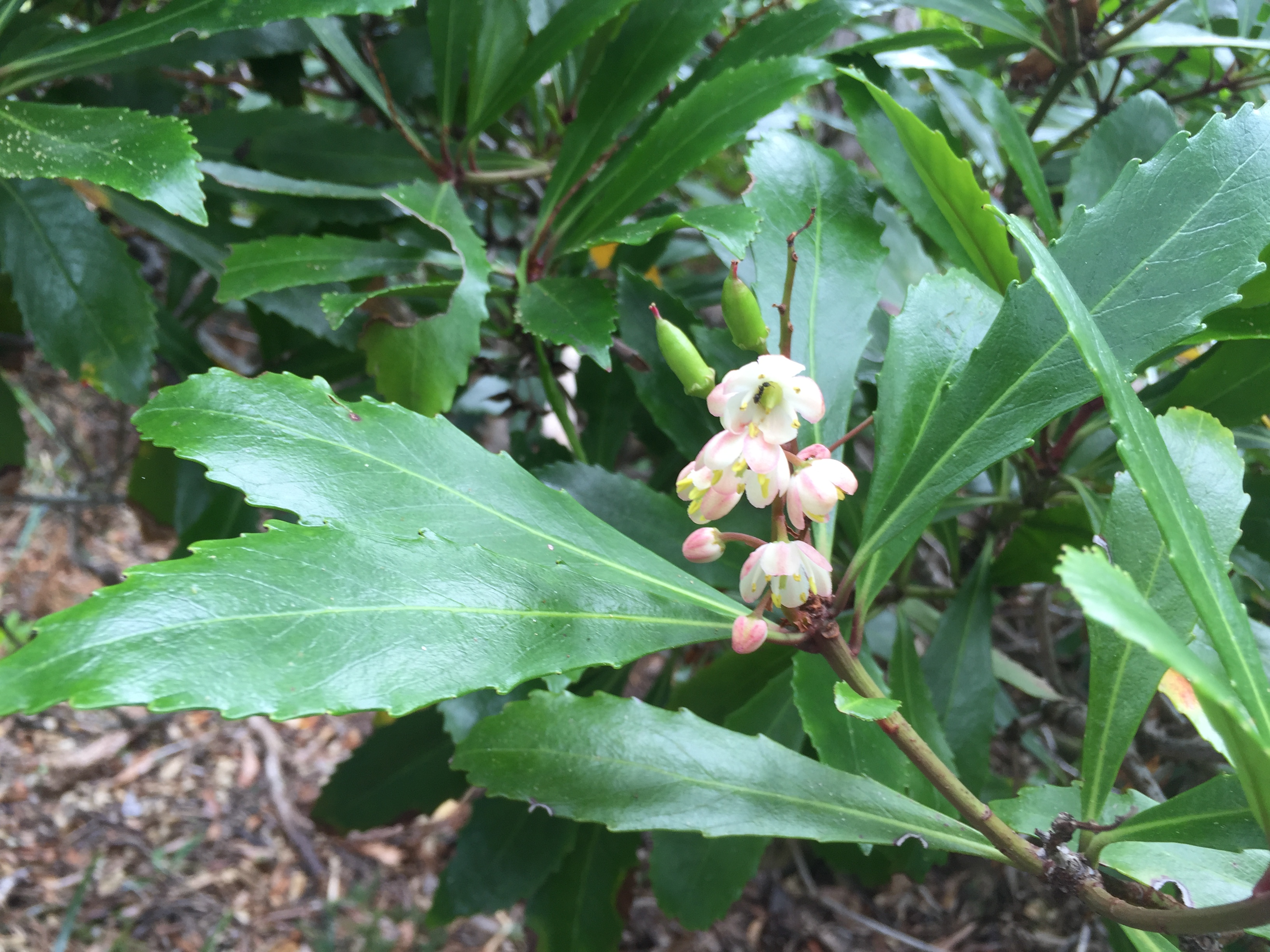Scientific Name: Anopterus glandulosus Endemic Having a natural distribution confined to a particular geographic region
Common Name: tasmanian laurel
Family Classification (Clade): Eudicots
Family: Escalloniaceae
Form Description: Tall shrub, straggly ,with branches tending to layer when growing in shady positions.
Height (m): 2 – 4
Flowers: Cup-shaped with 6 concave white or pink petals in terminal sprays.
Fruit: Capsule, 12-18mm long, containing two winged elongated seeds.
Municipality
Plant Communities
Habitat Notes
Frequent in wet sclerophyll and rainforests from sea level to about 900m. Also found on sandy soils near the south coast.
Site Tolerance
Moist, Shady
Soil Tolerance
Fertile, Loam, Nutrient-poor, Sandy, Well-drained
Frost Tolerance
Moderate
General Notes
In cultivation this species forms a dense rounded shrub which is slow growing. Good drainage is essential. Bee attracting. Susceptible to Phytophthora cinnamomi.
Propagation Calendar
-
Flowering Month
Jan Feb Mar Apr May Jun Jul Aug Sep Oct Nov Dec -
Seed Collecting Month
Jan Feb Mar Apr May Jun Jul Aug Sep Oct Nov Dec -
Sowing Month
Jan Feb Mar Apr May Jun Jul Aug Sep Oct Nov Dec -
Cutting Month
Jan Feb Mar Apr May Jun Jul Aug Sep Oct Nov Dec
Propagation Method
Seed Information
Seed Treatment Method
Standard Scatter seed thinly on to damp potting mix. Hold seed in place by covering with more potting mix to approximately the depth of the seed size.
Seed Storage Life
Short
Seed Treatment Notes
Fine seed should be surface sown or given a light cover. Fresh seed is needed.
Germination Time
1-2 months
Cutting & Division Information
Can be propagated from cuttings.

